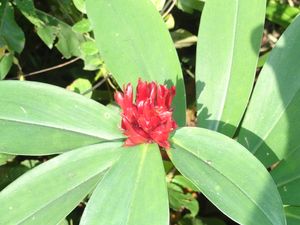Note: This is a project under development. The articles on this wiki are just being initiated and broadly incomplete. You can Help creating new pages.
Difference between revisions of "Cheilocostus speciosus - Kemuka"
| Line 7: | Line 7: | ||
The plant has many historical uses in Ayurveda, where the rhizome has been used to treat fever, rash, asthma, bronchitis, and intestinal worms. It is mentioned in the Kama Sutra as an ingredient in a cosmetic to be used on the eyelashes to increase sexual attractiveness. It is used to treat kidney problems and other urinary problems in Mizo Traditional Medicine. | The plant has many historical uses in Ayurveda, where the rhizome has been used to treat fever, rash, asthma, bronchitis, and intestinal worms. It is mentioned in the Kama Sutra as an ingredient in a cosmetic to be used on the eyelashes to increase sexual attractiveness. It is used to treat kidney problems and other urinary problems in Mizo Traditional Medicine. | ||
| + | |||
| + | == External Links == | ||
| + | |||
| + | *[https://en.wikipedia.org/wiki/Cheilocostus_speciosus Cheilocostus speciosus-Wikipedia] | ||
[[Category:Herbs]] | [[Category:Herbs]] | ||
Revision as of 16:54, 2 January 2017
Kemuka or Cheilocostus speciosus differs from the common ginger by having only one row of spirally arranged leaves. The species reproduces vegetatively by rhizome, and birds disperse the seeds when they feed on the fruits.
This plant is cultivated in India for its medicinal uses, and is cultivated elsewhere as an ornamental. In some areas Cheilocostus speciosus is introduced and has become an invasive species.
The plant has many historical uses in Ayurveda, where the rhizome has been used to treat fever, rash, asthma, bronchitis, and intestinal worms. It is mentioned in the Kama Sutra as an ingredient in a cosmetic to be used on the eyelashes to increase sexual attractiveness. It is used to treat kidney problems and other urinary problems in Mizo Traditional Medicine.
